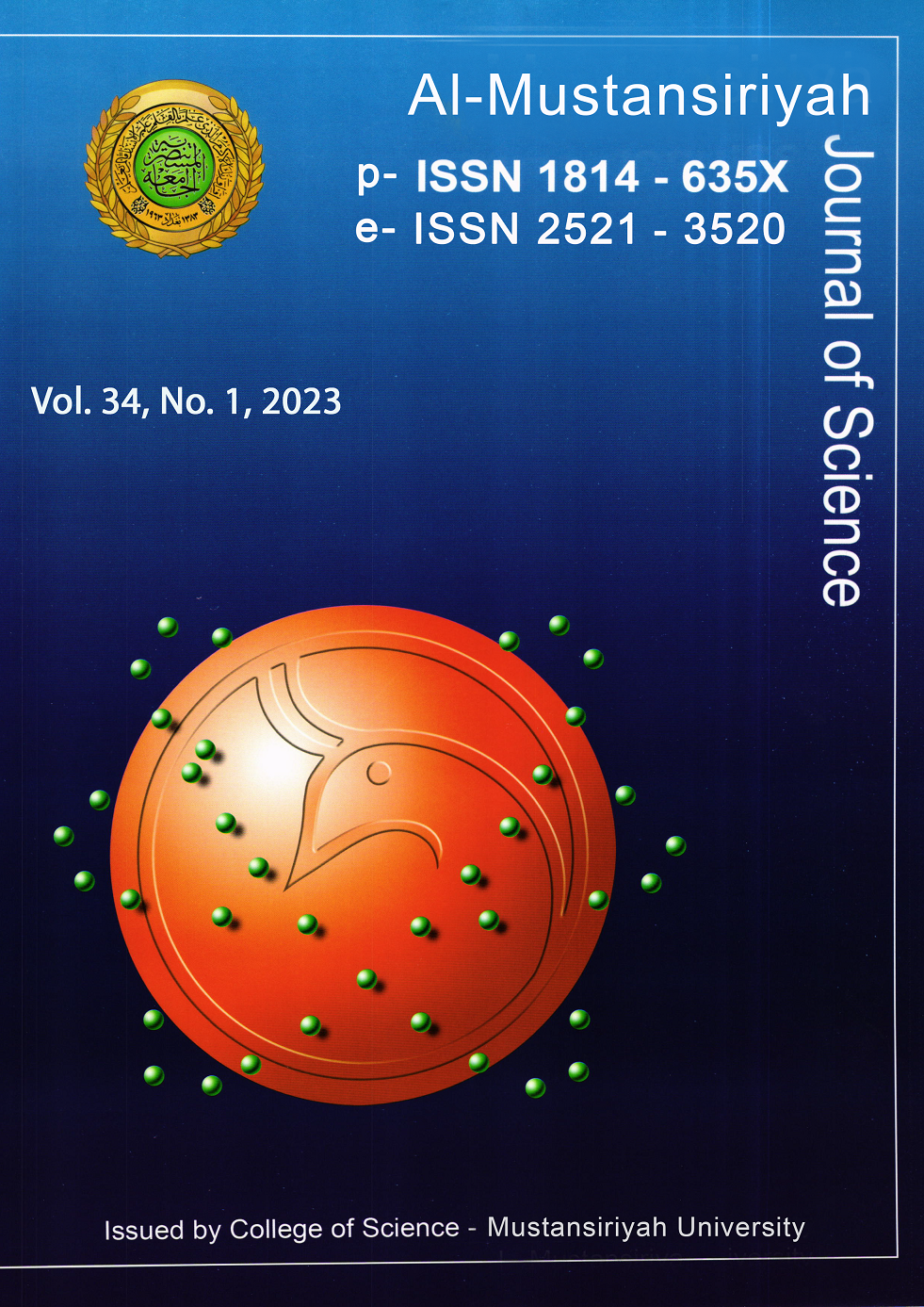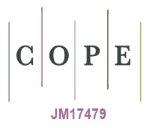Synthesis of CuO Nanrods Using Chemical Bath Deposition for a Nonenzymatic Glucose Biosensor
DOI:
https://doi.org/10.23851/mjs.v34i1.1228Keywords:
Copper oxide,, CBD method,, I-V characteristics,, Non-enzymatic glucose biosensorAbstract
In the present research, CuO NRs are produced on Indium Tin Oxide (ITO) using (CBD) growth process, and their electrochemical characteristics for glucose biosensors are studied. A field emission scanning electron microscope, x-ray diffractometer, energy dispersive x-ray, and UV-VIS spectroscopy were used to examine the morphology and crystallinity of a CuO film. The synthesized CuO film displays a monoclinic phase with average crystallite sizes of around (18–25) nm. CuO is composed of NRs aggregating together to construct flower and flower bud-like shape structures with a diameter between (20-80) nm and a thickness of the CuO film is about (158.5-285.7) nm. The energy gap of CuO NRs was 2.55 eV. The I-V characteristics of the biosensors were measured and evaluated at various glucose concentrations to determine their sensitivity. The electrocatalytic performance of the CuO for the detection of glucose was outstanding. With a very low limit of detection (LOD) of 0.45 μM and a sensitivity of 799 µA cm-2 Mm-1, the electrode attained a wide linear range from 0.5 to 2 mM. This result highlights the sensor's tremendous potential as a high-performance non-enzymatic glucose sensor that makes use of an original, cost-effective, and straightforward sensor design.
Downloads
References
J. D. Newman and A. P. Turner, "Home blood glucose biosensors: a commercial perspective," Biosensors and bioelectronics, vol. 20, no. 12, pp. 2435-2453, 2005.
K. J. Cash and H. A. Clark, "Nanosensors and nanomaterials for monitoring glucose in diabetes," Trends in Molecular Medicine, vol. 16, no. 12, pp. 584-593, 2010.
C. Deng, Y. Peng, L. Su, Y.-N. Liu, and F. Zhou, "On-line removal of redox-active interferents by a porous electrode before amperometric blood glucose determination," Analytica Chimica Acta, vol. 719, pp. 52-56, 2012.
M. Wei et al., "Electrochemical non-enzymatic glucose sensors: recent progress and perspectives," Chemical Communications, vol. 56, no. 93, pp. 14553-14569, 2020.
Y. Qiao et al., "High-performance non-enzymatic glucose detection: using a conductive Ni-MOF as an electrocatalyst," Journal of Materials Chemistry B, vol. 8, no. 25, pp. 5411-5415, 2020.
Z. Zhuang, X. Su, H. Yuan, Q. Sun, D. Xiao, and M. M. Choi, "An improved sensitivity non-enzymatic glucose sensor based on a CuO nanowire modified Cu electrode," Analyst, vol. 133, no. 1, pp. 126-132, 2008.
Y. Ding, Y. Wang, L. Su, M. Bellagamba, H. Zhang, and Y. Lei, "Electrospun Co3O4 nanofibers for sensitive and selective glucose detection," Biosensors and Bioelectronics, vol. 26, no. 2, pp. 542-548, 2010.
L. Zhang, H. Li, Y. Ni, J. Li, K. Liao, and G. Zhao, "Porous cuprous oxide microcubes for non-enzymatic amperometric hydrogen peroxide and glucose sensing," Electrochemistry Communications, vol. 11, no. 4, pp. 812-815, 2009.
J. Chen, W.-D. Zhang, and J.-S. Ye, "Nonenzymatic electrochemical glucose sensor based on MnO2/MWNTs nanocomposite," Electrochemistry Communications, vol. 10, no. 9, pp. 1268-1271, 2008.
X. Zhang, A. Gu, G. Wang, Y. Huang, H. Ji, and B. Fang, "Porous Cu-NiO modified glass carbon electrode enhanced nonenzymatic glucose electrochemical sensors," Analyst, vol. 136, no. 24, pp. 5175-5180, 2011.
A. Oral, E. Menşur, M. Aslan, and E. Başaran, "The preparation of copper (II) oxide thin films and the study of their microstructures and optical properties," Materials Chemistry and Physics, vol. 83, no. 1, pp. 140-144, 2004.
E. Reitz, W. Jia, M. Gentile, Y. Wang, and Y. Lei, "CuO nanospheres based nonenzymatic glucose sensor," Electroanalysis: An International Journal Devoted to Fundamental and Practical Aspects of Electroanalysis, vol. 20, no. 22, pp. 2482-2486, 2008.
P. Zhang, L. Zhang, G. Zhao, and F. Feng, "A highly sensitive nonenzymatic glucose sensor based on CuO nanowires," Microchimica Acta, vol. 176, no. 3, pp. 411-417, 2012/02/01 2012.
X. Wang, C. Hu, H. Liu, G. Du, X. He, and Y. Xi, "Synthesis of CuO nanostructures and their application for nonenzymatic glucose sensing," Sensors and Actuators B: Chemical, vol. 144, no. 1, pp. 220-225, 2010.
L. Tian and B. Liu, "Fabrication of CuO nanosheets modified Cu electrode and its excellent electrocatalytic performance towards glucose," Applied Surface Science, vol. 283, pp. 947-953, 2013.
X. Zhang et al., "Fabrication of CuO nanowalls on Cu substrate for a high performance enzyme-free glucose sensor," CrystEngComm, vol. 12, no. 4, pp. 1120-1126, 2010.
T.-K. Huang et al., "Glucose sensing by electrochemically grown copper nanobelt electrode," Journal of Electroanalytical Chemistry, vol. 636, no. 1-2, pp. 123-127, 2009.
H. Siddiqui, M. Qureshi, and F. Z. Haque, "Surfactant assisted wet chemical synthesis of copper oxide (CuO) nanostructures and their spectroscopic analysis," Optik, vol. 127, no. 5, pp. 2740-2747, 2016.
S. K. Shaikh, S. I. Inamdar, V. V. Ganbavle, and K. Y. Rajpure, "Chemical bath deposited ZnO thin film based UV photoconductive detector," Journal of Alloys and Compounds, vol. 664, pp. 242-249, 2016.
R. Saadon and O. A. Azeez, "Chemical route to synthesis hierarchical ZnO thick films for sensor application," Energy Procedia, vol. 50, pp. 445-453, 2014.
A. A. Aljubouri, A. D. Faisal, and W. K. Khalef, "Fabrication of temperature sensor based on copper oxide nanowires grown on titanium coated glass substrate," Materials Science-Poland, vol. 36, no. 3, pp. 460-468, 2018.
Downloads
Key Dates
Published
Issue
Section
License
Copyright (c) 2023 Al-Mustansiriyah Journal of Science

This work is licensed under a Creative Commons Attribution-NonCommercial 4.0 International License.
(Starting May 5, 2024) Authors retain copyright and grant the journal right of first publication with the work simultaneously licensed under a Creative Commons Attribution (CC-BY) 4.0 License that allows others to share the work with an acknowledgement of the work’s authorship and initial publication in this journal.






















